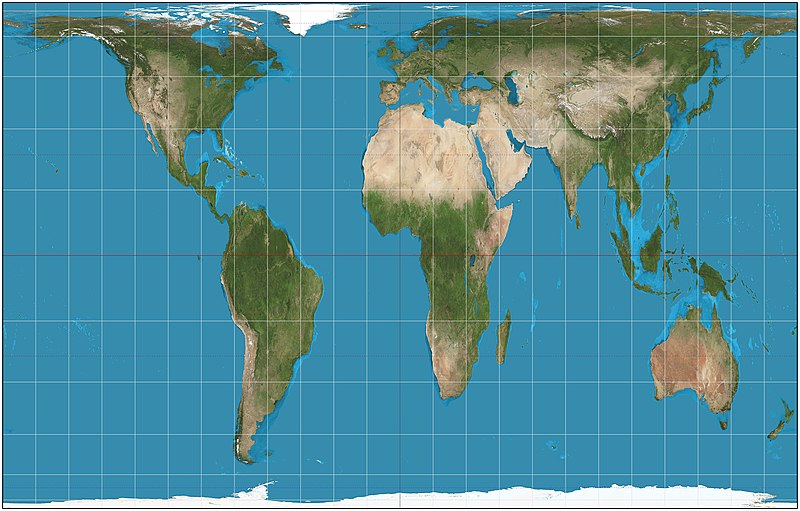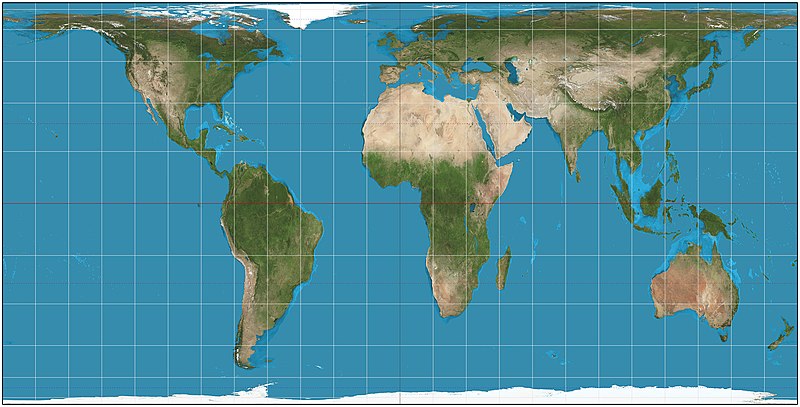
Download Accurate Earth Map (132 x 64)
About this map:
Obviously, it is impossible to make a perfectly accurate Earth map for Civilization. The Earth is a globe, so any representation of its surface on a plane is a compromise of one form or another, accurately representing some of the properties of the Earth's surface at the expense of distorting others. That is why geographers have invented various different map projections for different purposes.
Rather than a boast of perfect accuracy, calling my map "Accurate Earth Map" is simply a declaration of intention and design philosophy. Unlike many other Earth maps for Civilization IV (including the official one), mine does not feature an artificially enlarged Europe and Japan or an artificially reduced Pacific ocean. Instead, I went for as much geographical accuracy as possible, within the limitations of the game. The result is an Earth map that, in my view, is very interesting and unique. And while it won't allow you to cram half a dozen civilizations into Europe, it makes for a great game in other ways.
Because cities and the plots they occupy are in many ways the core of the game, I decided that preserving area was the most important aspect of geographical accuracy in Civilization, rather than preserving shape or distance. I used a cylindrical equal-area projection with standard parallels at 37.3 degrees north and south of the equator (sometimes known as the "Hobo-Dyer projection"). All continents and oceans are depicted with their correct areas relative to each other. Australia really is three quarters the size of Europe, Africa really is 14 times the size of Greenland, and so on.
I spent a lot of time trying to get the placement of terrain, rivers and natural resources as accurate as possible. For example, I used essays like Forecasting Coal Production Until 2100 by Evans and Mohr to get figures of worldwide coal reserves at the beginning of the industrial age, and distributed that resource accordingly. I placed oases at geographically appropriate locations like Tafilalt in Morocco. I even looked at maps of the ocean productivity like this one to place fish resources.
I created the map from scratch using MapView 2.0. As a basis for the map, I primarily used the maps from the Natural Earth III website, which I converted to the cylindrical equal-area projection with NASA's Global Map Projector and overlayed one on top of the other with Adobe Photoshop Elements.
As you can see, a lot of work went into this map. I hope that you like the result. Have fun, and don't hesitate to send feedback and comments!
Inside the .rar archive:
There are six maps inside the .rar archive. Two for basic Civilization IV, two for the Warlords expansion, and two for the Beyond the Sword expansion. For each version of the game, there is one "blank" map with no civilizations set, and one that has 12 civilizations already set up (in historically accurate starting locations, unless otherwise noted). For basic Civilization IV, the 12 civilizations are: American, Aztec, Chinese, Egyptian, English (in South Africa), French (in Southeast Asia), Greek, Incan, Indian, Malinese, Mongolian, Persian. For Warlords, they are: American, Aztec, Chinese, Egyptian, French (in Southeast Asia), Greek, Incan, Indian, Malinese, Mongolian, Persian, Zulu. For Beyond the Sword, they are: Aztec, Babylonian, Chinese, Egyptian, Greek, Incan, Indian, Khmer, Malinese, Mongolian, Native American, Zulu.
To use the maps, you need to extract the appropriate files to the appropriate PublicMaps folder. For basic Civilization IV, extract the *.Civ4WorldBuilderSave files to the PublicMaps folder inside your Civilization IV directory. For Warlords, extract the *.CivWarlordsWBSave files to the Warlords\PublicMaps folder. For Beyond the Sword, extract the *.CivBeyondSwordWBSave files to the Beyond the Sword\Public Maps folder.





 Moderator Action: Please don't troll around.
Moderator Action: Please don't troll around.